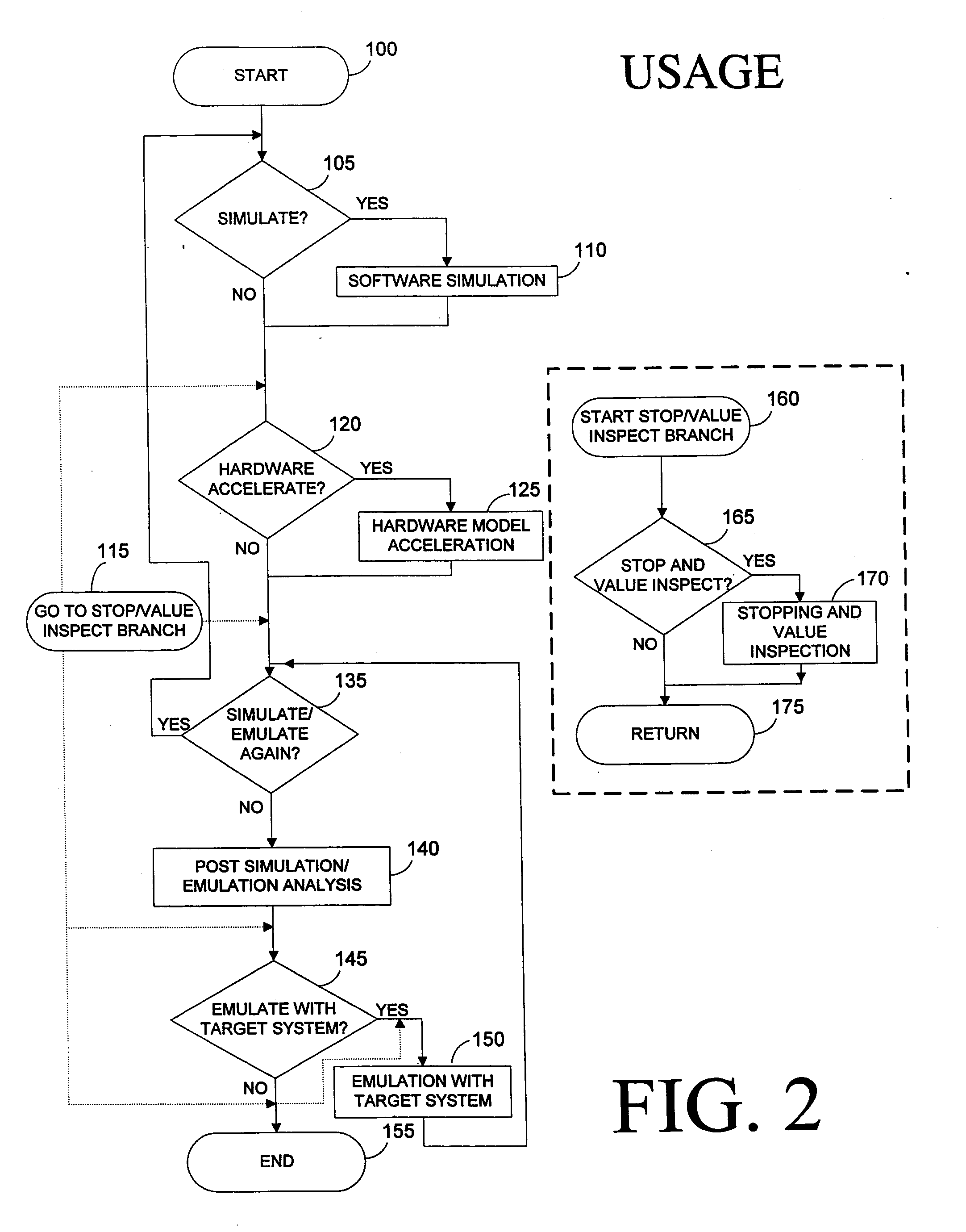Common shared memory in a verification system
a verification system and shared memory technology, applied in the field of electronic design automation (eda), can solve the problems of burdening the user, requiring some degree of user sophistication, and current software simulation and hardware emulation/acceleration are cumbersome for the user, and achieve the effect of less hardware resources and similar performance levels
- Summary
- Abstract
- Description
- Claims
- Application Information
AI Technical Summary
Benefits of technology
Problems solved by technology
Method used
Image
Examples
first example
[0890]
Signal a(IO);Signal b(10);Signal Clk(I);State sO: {Trigger = 0;If(a = = 4) {Load counterO = 30Goto s2}}State s2: {If( counterO = = 0){if(b = = 5)trigger = 1 so;}if(clk = = 1){decrement counter 0; ggoto s3; o} oState s3: {if(clk = = 0)goto s2;} indicates data missing or illegible when filed
second example
[0891]
Signal a(1O);Signal b(IO);State sO :{if(a = = 1 && b = = 5) goto sI;}State sl :{if(a = = 5 && b = = 10)trigger = 1;else goto sO;}
Call Testbench Primitive (axis_tbcall)
[0892]As described above, the behavior processor provides a hardware-based “interrupt”-like control. When some condition (as defined by the user based on his user design) is satisfied within the behavior processor, it sends a control signal back to the RCC system and any testbench processes. To provide I / O services and system controls during hardware emulation mode, one embodiment of the present invention includes a call testbench primitive, axis_tbcall, that lets the user use a hardware signal to call a software task during hardware emulation. The task is then executed in software in the RCC workstation.
[0893]The syntax for the axis tbcall primitive is as follows:
axis_tbcall(trigger_signal, “task_to_execute”);
[0894]The trigger_signal must be a scalar signal in the DUT (Device Under Test) that triggers the task c...
PUM
 Login to View More
Login to View More Abstract
Description
Claims
Application Information
 Login to View More
Login to View More - R&D
- Intellectual Property
- Life Sciences
- Materials
- Tech Scout
- Unparalleled Data Quality
- Higher Quality Content
- 60% Fewer Hallucinations
Browse by: Latest US Patents, China's latest patents, Technical Efficacy Thesaurus, Application Domain, Technology Topic, Popular Technical Reports.
© 2025 PatSnap. All rights reserved.Legal|Privacy policy|Modern Slavery Act Transparency Statement|Sitemap|About US| Contact US: help@patsnap.com



